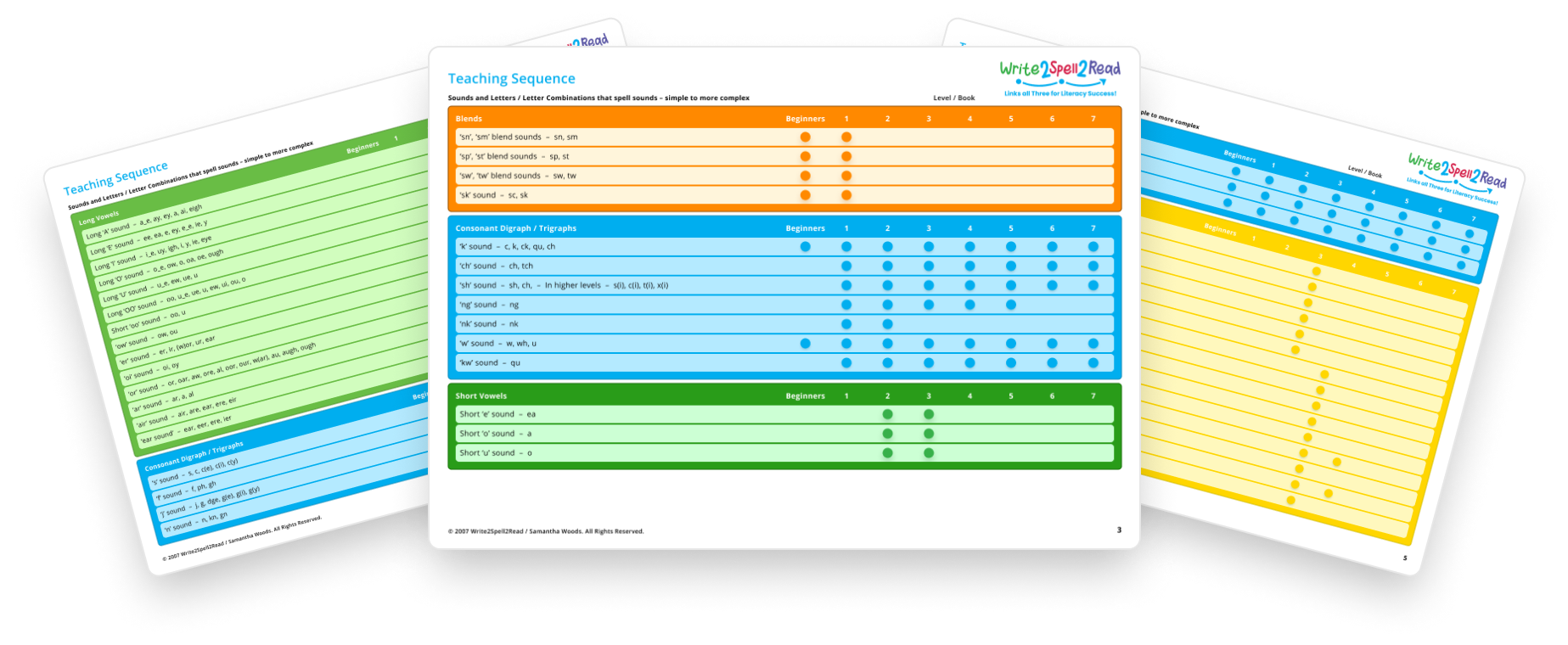Structured Synthetic Phonics Teaching Sequence
Write2Spell2Read’s Structured Synthetic Phonics (SSP) Program is an evidence-based program designed by an Occupational Therapist and aligned with the Science of Reading and Handwriting.
A Synthetic Phonics Program means:
- Students are taught to read by linking letters they see to speech sounds, and then blending these sounds together to read words.
- Students are taught to spell by learning to segment words into their sounds and link these sounds to letters, in order to spell them.
Structured means:
- Write2Spell2Read follows a structured teaching sequence progressing from simple to more complex.
- The English language has 26 letters (graphemes) but 44 different sounds (phonemes). Each sound can have different ways to spell the sound.
- The teaching sequence starts with the simple alphabet code, teaching that each alphabet letter has its own sound (initial code).
- Lowercase alphabet letters are grouped and introduced according to letters with similar shapes to make handwriting easier to learn. This ensures the learning of sounds is linked with automatic handwriting and the prevention of incorrect letter formation.
- Students are then taught that 2 or 3 letters (digraphs/trigraphs), or letter combinations can make a new sound.
- Students are also taught that the same letter or group of letters can represent different sounds.
- Later more complex spelling patterns are taught (extended code).
Download the FREE structured Teaching Sequence (below) –
Progresses from Beginners to Level 7*
*Program includes Spelling Rules
Follow the Teaching Sequence and ensure a Whole School Literacy Plan for consistency across the whole primary school.
Downloadable Easy Teaching Guides & Weekly Routines are available in the Members Area and provide an easy step by step guide to teaching Write2Spell2Read effectively and following the SSP Teaching Sequence.

